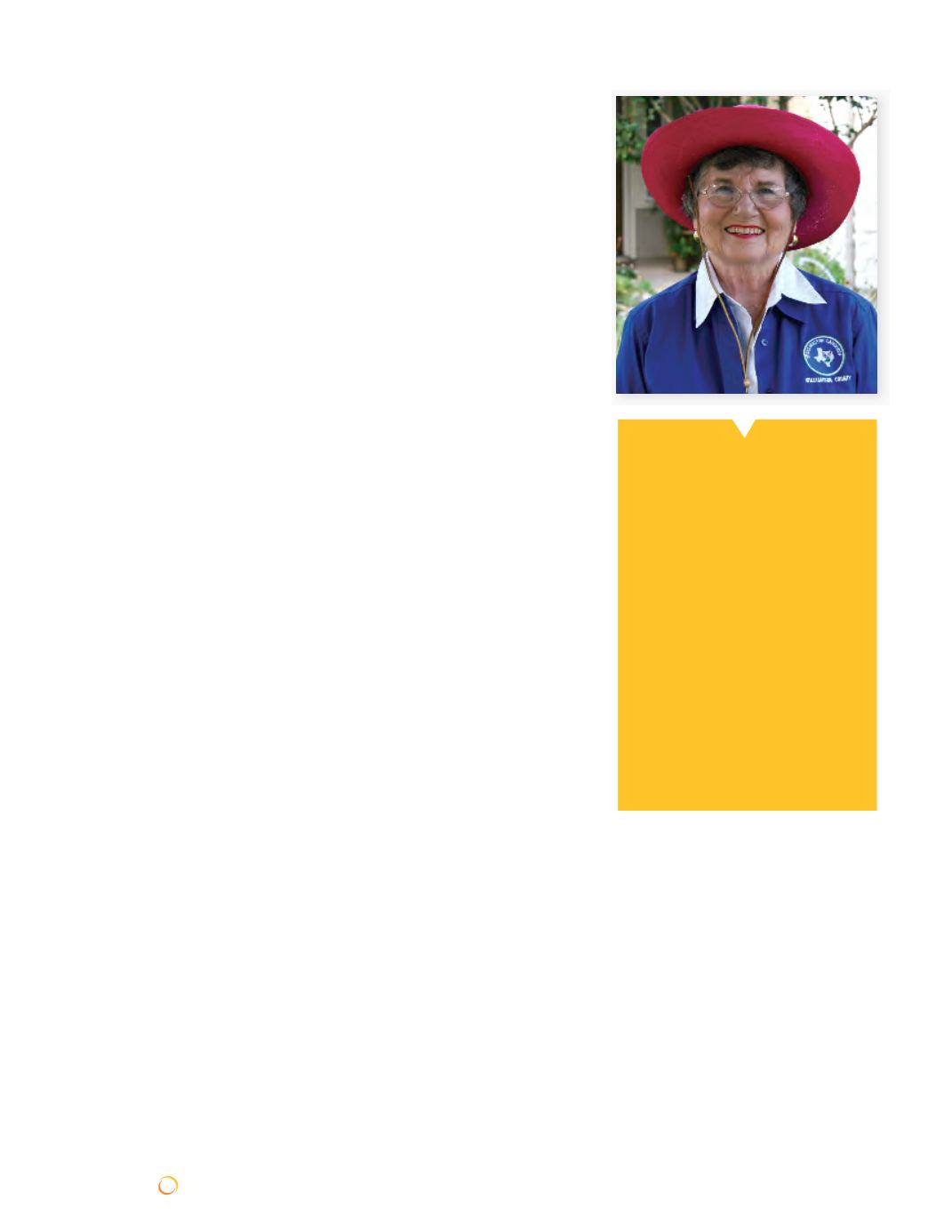
60
| SUNRAYS SEPTEMBER 2014
ONLINE:
SCTXCA.ORG
New residents have requested a brief
checklist for beginning their new land-
scape, and this information is also ap-
propriate for those converting existing
landscapes to more drought-tolerant ar-
eas as well. The following is only a brief
list, but procedures will be discussed
in further detail in future months with
Texas A&M Earthkind resources sug-
gested.
To begin planning your landscape,
first analyze conditions in your land-
scape area: sun/shade, shadows, wind,
drainage, etc. Also, consider getting
your soil tested by the Texas A&M
AgriLife Extension Service to have
all of the information you need avail-
able early in your landscaping project.
For information on the different tests,
how to submit a soil sample, and the
results and what they mean, go to http://
publications.tamu.edu/SOIL_CONSER-
VATION_NUTRIENTS/E-534.pdf. If
you decide to have your soil tested, go
to soiltesting.tamu.edu and click “Our
Submittal Forms,” then click on “Urban
Soil Submittal Form.”
Next, decide how you will use the land-
scape. Will it be more of an entertain-
ing area, or a place for quiet contem-
plation, privacy, seclusion, or projects/
experiments? With that in mind, plan
trees, drainage, and hardscape to reduce
future costs and maintenance.
Plan hydrozones—areas with plants
grouped by like water needs—with
plants needing additional water near
the house for easy hand watering. Keep
rocks that reflect heat and less fire-resis-
tant plants, such as upright rosemary,
pampas grass, and yaupon holly, away
from the house. It is best to plan a com-
bination of sprinkler and drip irrigation
rather than sprinkler system alone.
Plan for a variety of hardscape ma-
September Tips for a Beautiful
Water Wise Landscape
Next month
:
Join me as we
discuss hydrozoning strategies
for a healthy, water-saving and
Firewise landscape.
Winola is a Williamson County
Master Gardener, a member of
the Sun City Garden Club and a
member of the Sun City Water Wise
Task Force.
Master Gardeners and other expe-
rienced gardeners are available to
answer questions a half hour be-
fore Sun City Garden Club meet-
ings eachmonth. The Garden Club
meets the secondWednesday of each
month beginning with the question/
answer period at 12:30 p.m.
By Winola VanArtsdalen
terials, elevations, color and texture
of plants, being sure to anticipate for
growth and shade. Evaluate carefully
before making decisions on saving or
removing trees.
For turf and flower beds, you need a
minimum of four inches (4”) of soil; it is
better to have six to eight inches (6-8”).
Amend the soil in accordance with soil
test results for both turf and flowerbeds.
Adding quality soil and amendments
now is a wise investment, as you will use
less water and have healthier plants for
years to come. For flower beds, you may
buy a soil mix from a trusted dirt yard
with compost, sands, and composted
top soil, but it is better to amend your
own soil. To mix amendments into your
existing soil in flower bed areas, add
one-third to one-half compost, as well
as minerals—such as expanded shale or
decomposed granite—for drainage. For
example, add three inches of compost if
tilling soil six inches deep.
SEPTEMBER GARDENING TIPS
• Save seeds from summer annuals you
want to plant next spring. Plan to
start new plants from cuttings of fa-
vorite perennials when weather cools,
but before winter.
• Be ready to plant wildflower seeds
for spring bloom, with a target date
of October 1. You will need to have
cleared the area and loosened the soil
before planting.
• Groom roses and other plants for fall
blooms. Remove debris from beds.
• Add compost to areas now to prepare
areas where you plan to begin trans-
planting perennials at the end of this
month, but wait until winter to move
evergreens.
• Turf care:
• September 1: Apply pre-emergent
for annual winter weeds.
• September 15-30: Monitor for
brown patch, a fungus character-
ized by circular patches one foot
to several feet in diameter with a
“smoke ring” appearance.
• Apply one-half to one inch of top
dressing after temperatures lower,
usually mid-September.
Horticulture Questions:
Contact Williamson County
AgriLIFE Extension Office at
512-943-3300.


